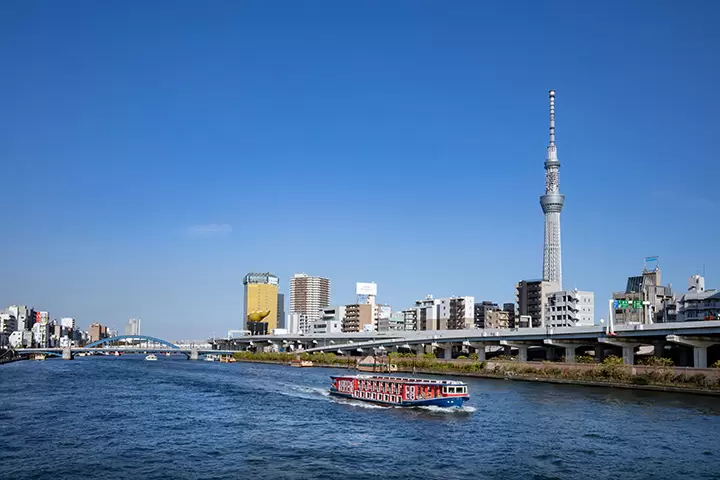The first step to becoming a sushi chef! Experience san-mi-oroshi and nigiri sushi in the sushi course at Kudan Japanese Language Institute x GINZA ONODERA

I participated in a collaborative sushi course by Kudan Japanese Language Institute and GINZA ONODERA Sushi Academy. I learned how to fillet horse mackerel and how to make salmon nigiri sushi. It was a fun lesson where I could learn Japanese and sushi-making techniques at the same time. The next course will be held on January 13, 2025.
Today, I participated in a sushi course lesson organized jointly by Kudan Japanese Language Institute and GINZA ONODERA Sushi Academy.
Today's curriculum is Session 2 (1) [Preparation] Three-piece filleting and Session 2 (2) [Basics] Nigiri sushi.
The fish we will fillet today is horse mackerel.
Horse mackerel is a very popular fish in Japan, and can be enjoyed in a variety of ways, including as sashimi at sushi restaurants, grilled, fried, or stewed.
First, peel off the scales with a knife.
Horse mackerel has hard scales called zeigo on its sides.
This is said to serve as a defense against predation.
When eating it as sashimi or sushi, it has an unpleasant taste so it is removed with a knife.
Cut the head off behind the pectoral fin.
This is done by Chinese students.
Use the blade of a knife to scrape out the innards. They will have a bitter taste and a fishy smell, so be sure to remove them thoroughly.
Cut the belly, cut down to the backbone and proceed with the knife to the tail.
The teacher's professional knife skills are so beautiful that I almost forgot to take photos.
Insert the knife into the back, penetrate through to the belly and cut down to the tail.
The body heat of your hands will cause the fish to lose its freshness, so cut it into three pieces quickly!
I cut off the lower part.
Make sure to place the head on the left side and cut away the flesh from the bottom.
Cut off the upper body in the same way.
We remove the small bones called blood bones.
The bone can be easily removed by pulling it diagonally towards the head.
Peel the skin off using the back of a knife.
Use a knife to scoop up and cut off the belly bone.
This is done by Spanish students.
He used to be a chef in his home country, so he handled the knives with ease.
The fish is now cut into three pieces!
It's good for sashimi or sushi.
For the nigiri sushi, use salmon.
In the past, salmon was not used in sushi because it was dangerous to eat raw due to parasites and it was not caught in the waters off the Kanto region.
However, around 1980, when parasite-free farmed Atlantic salmon began to be imported into Japan, it gradually became more well-known than conveyor belt sushi.
Do you remember how to form the rice when making gunkanmaki in the last lesson?
We all make sushi together.
Salmon nigiri sushi is done!
The instructor is friendly and thorough, and the class is a fun environment where you can learn sushi techniques.
Kudan Japanese Language Institute x Ginza ONODERA's sushi course where you can learn Japanese and sushi-making techniques at the same time.
The next event will be held on January 13, 2025.
Kudan Institute of Japanese Language & Culture is located about 5 minutes walk from JR Suidobashi Station (east exit) and about 10 minutes walk from Jimbocho Station and Kudanshita Station. At any given time, students from 25 to 40 countries study in Japan. At our school, we have events and courses where you can not only learn Japanese but also learn about Japanese culture. In addition to the conversation course, intensive course, and practical Japanese course, we also offer a short-term tea ceremony course and a manga course. You can take a cultural course after your Japanese class. (Manga course is set with conversation course) There are also courses that can be studied online. [Job Preparation Course] for those who are aiming to find a job in Japan, [Business Japanese Brush-up Course] for those who are already working in Japan and can learn the business Japanese and etiquette necessary for working, and the Japanese Language Proficiency Test ( We offer a variety of courses, including the [JLPT Preparation Course] where you can take an online preparation course before the JLPT. For busy people, we can also offer [online private lessons] and [face-to-face private lessons]. Winter holiday courses that include extracurricular activities, spring holiday courses, and summer holiday courses that include travel in addition to extracurricular activities are very popular every year. Summer is especially popular with high school students from various countries, so early reservations are recommended. I am. (It will be closed as soon as the capacity is reached) In addition to English, our school also has staff who can speak Chinese and Korean, so please feel free to contact us.
The contents on this page may partially contain automatic translation.


































![[Just a short distance from Nagoya] Popular Taiwanese YouTuber Alan tours Aichi, Tokoname!](https://resources.matcha-jp.com/resize/720x2000/2026/01/08-255181.webp)
